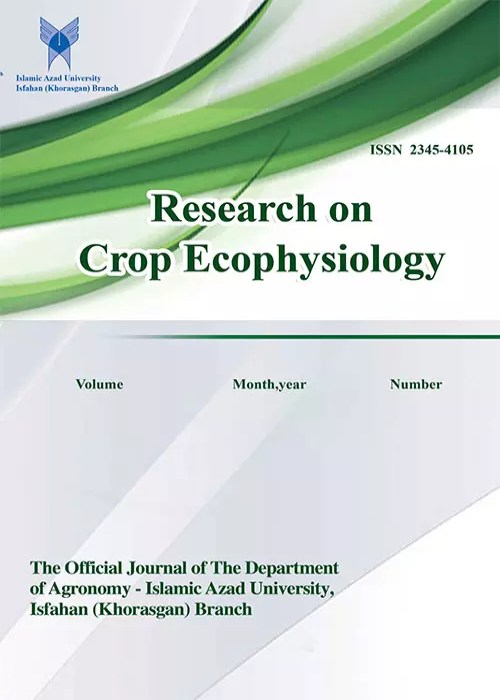Evaluation of Genetic Diversity of Durum Wheat Genotypes (Triticum turgidum var durum) using Agro-morphological Traits for Resistance to Zinc Deficient Stress
Micronutrients deficiency stress is one of the most important dangers for increasing the yield and good production of crops in the world. In order to evaluate genetic diversity of nineteen durum wheat (Triticum turgidum var durum) genotypes to identify the most zinc-deficient stress resistant genotypes and also finding the best stress tolerance indices, an experiment was carried out in the University of Maragheh, Iran during cropping season of 2014 by using a factorial design in the randomized complete block design (RCBD) with three replications. The experiment was done zinc deficient stress (non-Zn application; -Zn) and normal soil application (5 mg Zn/kg soil + foliar application with 0.44 g Zn/liter water at stem elongation and grain filling stages; +Zn) conditions. Results indicated that Zn conditions as well as, wheat genotypes differed significantly for all studied agro-morphological traits in both normal and Zn deficient stress conditions. Our findings indicated that Zn-deficient stress significantly decreased the spike length (SL), peduncle length (PedL), penultimate length (PenL), plant height (PH), spike weight (SW), peduncle weight (PedW), penultimate weight (PenW), biological yield (BY), grain yield (GY), harvest index (HI), number of grains per spike (NGS), number of fertile spikelet per spike (FS) and 1000 grains weight (TGW) by 14, 10.6, 10.4, 12.5, 25.3, 26.2, 27.9, 27.5, 29.4, 5.0, 25.5, 17.7 and 5.4%, respectively. Among durum wheat genotypes, ‘G2’ had the highest and also ‘G10’ and ‘G19’ had the lowest SW, PedW, BY and FS, respectively; while the highest and the shortest GY and NGS was observed in ‘G17’ (0.763 g/plant and 23.2 grain) and ‘G10’ and ‘G19’ (0.372 and 367 g/plant and 8.9 and 9.5 grain) genotypes, respectively. This indicating the presence of variability, which can be exploited through selection for further breeding programs. According to results of stress tolerance indices, ‘G17’, ‘G16’ and ‘G3’ genotypes have higher GY and STI index than other genotypes in two Zn conditions and identified as suitable genotypes for production in Zn deficient stress condition.
- حق عضویت دریافتی صرف حمایت از نشریات عضو و نگهداری، تکمیل و توسعه مگیران میشود.
- پرداخت حق اشتراک و دانلود مقالات اجازه بازنشر آن در سایر رسانههای چاپی و دیجیتال را به کاربر نمیدهد.



